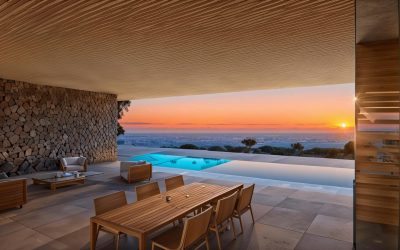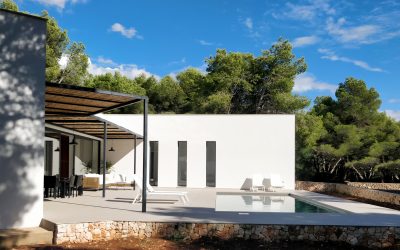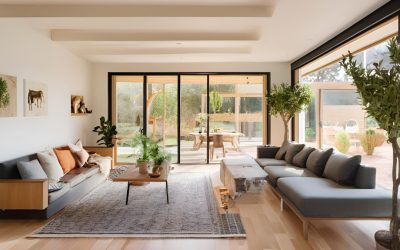Towards a sustainable architecture
If we say that something is sustainable, we identify it as something that lasts over time. Later in this article we will talk of this very current concept, The sustainability, and we will analyze some of the key concepts of sustainable architecture, such as environmental impact, the life cycle, or the circular economy.
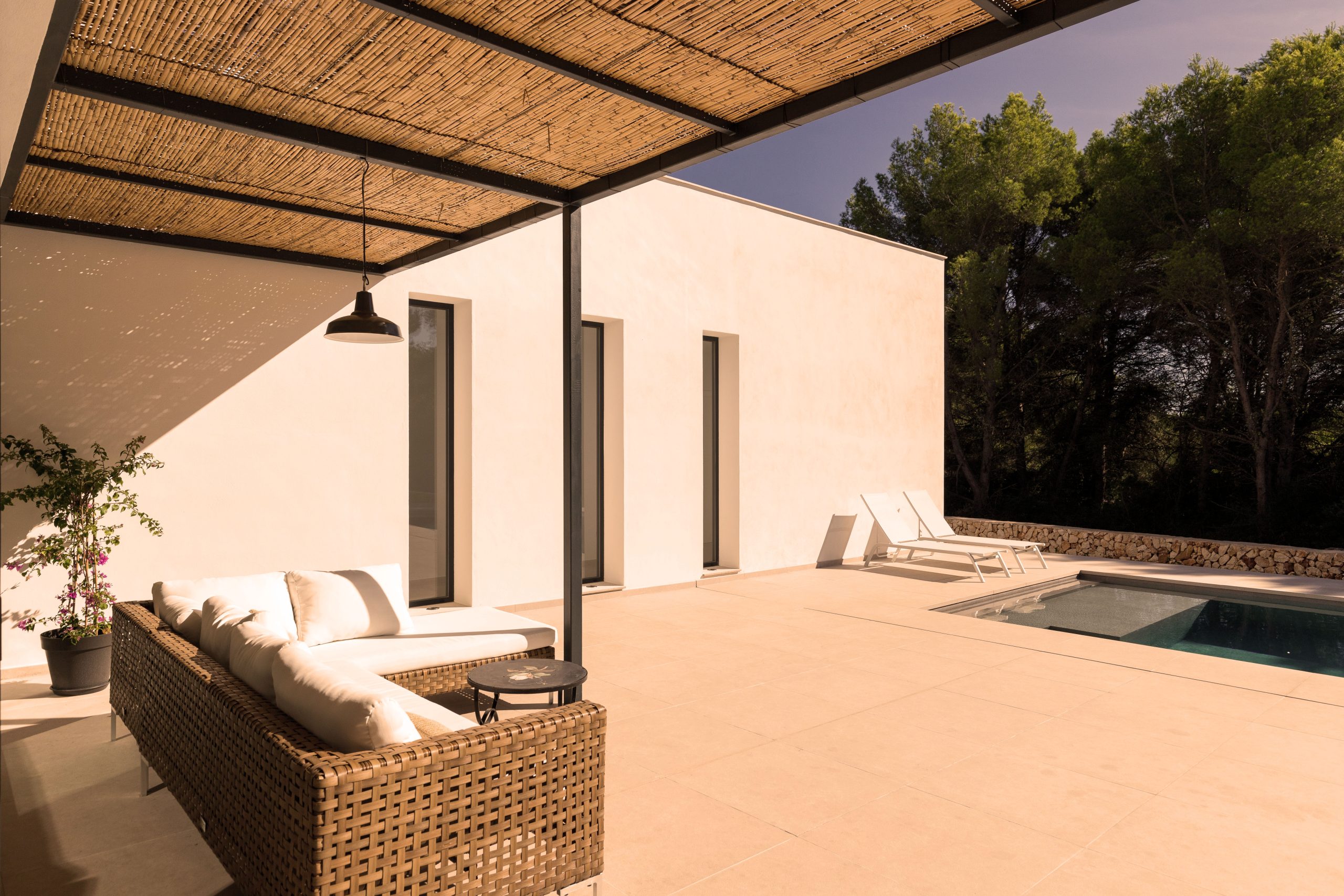
The climate emergency and the urgency of change have provoked the debate on sustainability in many and diverse economic spheres, stimulating the appearance of new, more durable and ecological forms of production and consumption.
But how can we apply this concept to architecture?
And also, what can we change in our designs to achieve more sustainable buildings?
First of all, the concept of sustainability reaches architecture in order to minimize environmental impactl that buildings entail, both during the construction phase and throughout their useful life.
For this reason, we apply principles of sustainable architecture and passive architecture in our designs. These principles combined with other more recent concepts such as energy efficiency and the production of renewable energy, manage to build buildings that are more respectful of the planet.
Let's start with a technical definition of the word itself...
Sustainability is a principle based on meeting the needs of everyday life, without compromising the needs of future generations.
Sustainability is achieving a balance between economy, respect for the environment and social welfare.
THE FOOTPRINT OF THE HUMAN BEING
Living beings have inhabited this planet for millennia, interacting with it, and nourishing ourselves from it. For centuries the human being has lived with the ecosystem that the Earth offered him. This relationship has evolved in full harmony, without causing significant damage to the natural environment.
This balance began to deteriorate after the industrial revolution. Greenhouse gas emissions began to emerge in a massive way and the link between people and nature began to break.
For years, the desire of the human being to exploit without measure the resources that nature offers, has caused levels of contamination never seen on earth. As a consequence, climate change is becoming more and more latent, with meteorological effects worsening year after year.
The human species should not deny the part of the blame that falls on it in this story, taking responsibility for the depletion of certain natural resources, and also, for the loss of biodiversity in certain regions of the planet.

WE MUST REACT NOW!
A collective mobilization is urgently needed to face this disposable world. The methods used so far have not been the most appropriate, and a change of mentality is urgently needed. We must be aware of the seriousness of the problem, and study the implementation of durable systems based on reuse and recovery, in order to reverse the situation.
Establish in our day to day new customs and new consumption habits, which guarantee the perpetuity in time of our natural resources, and which ensure the future well-being of our children.
But it's not all bad news! Concerned neighborhood communities, sustainable neighborhoods in large cities, self-sufficient towns are becoming more and more common. Also the cooperation of citizens to encourage sustainable initiatives is increasingly visible, and their voice is heard in many corners of our planet.
The application of bioclimatic concepts in our designs, the incorporation of renewable energies, and the reuse of resources will make our architecture more sustainable and durable over time. Sustainability is a promise of durability.

Sustainable architecture - The environmental impact of a building
The environmental impact is the modification or alteration that a human action causes on the environment, understanding it as the set of physical conditions that surround living beings.
Any change in the environment that surrounds us has an impact that is not always negative. Environmental actions to improve the natural environment are increasingly common, and humans are concerned with repairing the damage that past actions caused to biodiversity and the landscape. We understand by positive impact all those alterations of the environmental environment, which cause beneficial effects for its development and conservation.
Other characteristics of the environmental impact, such as its magnitude, extension, intensity, duration, or frequency, help us to evaluate and estimate its importance on a given environment.
The construction of a building is considered a negative impact, and its intensity depends on the magnitude of the project and the place where it is located.
Sustainable architecture minimizes this commotion, circumventing any substantial modification of the terrain, integrating perfectly into its immediate framework, and minimizing its carbon footprint.
In addition, it is essential that its appearance does not cause substantial alterations to the ecosystem that it is currently occupying.

Sustainable architecture - The life cycle of a building
To calculate and quantify the total impact of a building we must be clear about the concept of life cycle. Life Cycle Assessment (LCA) studies and calculates the environmental impacts throughout all phases of a product's or activity's life.
Sustainable architecture - ACV phases of a building
Applied to architecture we distinguish the following phases:
1º – PRODUCTION OF RAW MATERIALS
This phase integrates the impact of the extraction and transformation of materials from the natural environment, also incorporating the application energies necessary to obtain them.
2nd – TRANSPORTATION
The construction elements are transported to the construction site. The existing infrastructures in the vicinity of the work, and the dimensions of the pieces, will influence the impact of this phase. Therefore, the use of traditional materials from the area, produced and processed in a nearby environment, will entail more moderate environmental impacts.
3rd – WORK START
This phase includes the energy necessary for the erection of the building.
4º – USEFUL LIFE AND USE
This phase starts from the moment the users occupy the building, until it stops fulfilling its function correctly. The incorporation of renewable energy production systems, good thermal insulation, and good hermeticity, minimize the energy cost during its useful life.
5th – DEMOLITION AND RECYCLING
When the building is no longer occupied, it is considered waste that we have to deal with. The dismantling of the different construction elements should be done carefully, for their subsequent reuse or recycling.
In each phase there is an impact of a greater or lesser extent on the environment and the living beings that inhabit it. A complete analysis of each of them allows us to identify those with the greatest impact, and act directly on them.
Therefore, sustainable architecture involves a detailed study of LCA from the beginning of the project.
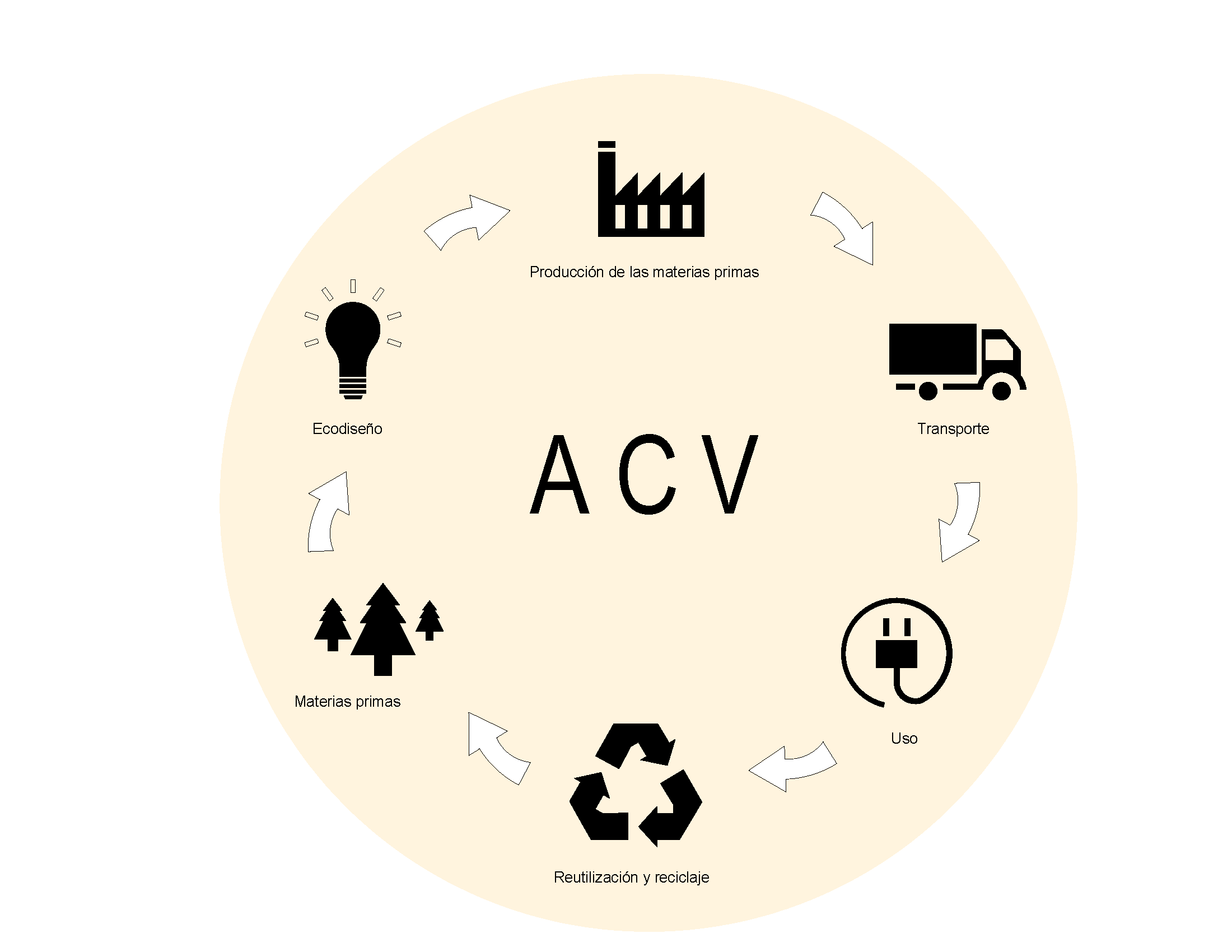
Sustainable architecture - circular economy
The study of the life cycle analysis, and the minimization of the alterations of the natural environment in each of the phases, leads us towards the application of a principle based on the durability of any system, the circular economy.
The system that we have implemented over the years is based on a linear scheme, it is what we colloquially call throwaway. We produce what we need, we use it, and when it doesn't serve us, or when it doesn't satisfy our desires, we throw it away.
The circular economy advocates breaking this scheme that gradually depletes our natural resources, making it circular. That is, produce, use, recycle, and reuse. The drastic application of this concept in our production system would eradicate tons of waste that is generated in the world every day. Therefore, awareness of the importance of concepts such as durability, repairability and separability are essential to reach levels of recycling and reuse that help us curb the impact that our waste causes on the environment.

Conclusion
To conclude, we will insist that the planet is deteriorating rapidly. Concepts such as sustainability, reuse, recycling... sound more and more loud in our minds. A greener future is possible, and each one of us must do his bit.
At Sendra arquitectura we believe in sustainable, ecological and responsible architecture. We long for a world in which construction is not seen as destroying ecosystems. An architecture that lives in harmony with its environment, and that helps to change the customs and consciousness of the people who inhabit it.
(Read article Ecological houses)
BIBLIOGRAPHY
– ecological architecture. An illustrated manual. Editorial G.G.
– Circular economy in the construction sector. CONAMA
– Environmental management. Life cycle analysis. Principles and frame of reference. ISO 14040 of 2006.
PHOTOGRAPHS
– Guilhem Guinot – Instagram
– https://www.freepik.es/disparo-gran-angular-humo-blanco-que-sale-plantas-nucleares.
– https://www.freepik.es/mujer-joven-clasificacion-basura-concepto-reciclaje-cero-desperdicio.
READ MORE ARTICLES
Razones por las que elegir un arquitecto Passivhaus
Arquitecto Passivhaus en Menorca. En la búsqueda de soluciones sostenibles para enfrentar los desafíos del cambio...
5 ventajas de las casas bioclimáticas que mejorarán tu vida
El mundo de la arquitectura está evolucionando hacia un enfoque más sostenible y eficiente. Las casas bioclimáticas,...
How much does it cost to build a passive house? Everything you need to know.
¿Te gustaría construir una casa pasiva en el mediterráneo, pero no sabes cuánto te va a costar? Si es así, ¡has...
MALLORCA
C/ Miquel dels Sants Oliver 9, 07011 Palma
BARCELONA
C/ de l'Alzina 21, 08024 Barcelona
PARIS
18 Rue Saint Bernard, 75011 Paris

